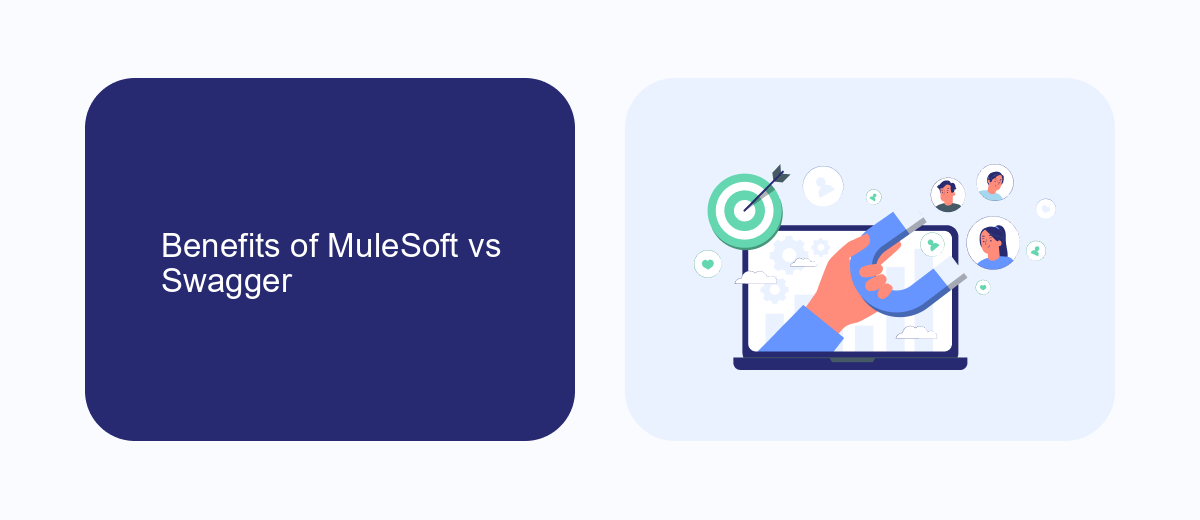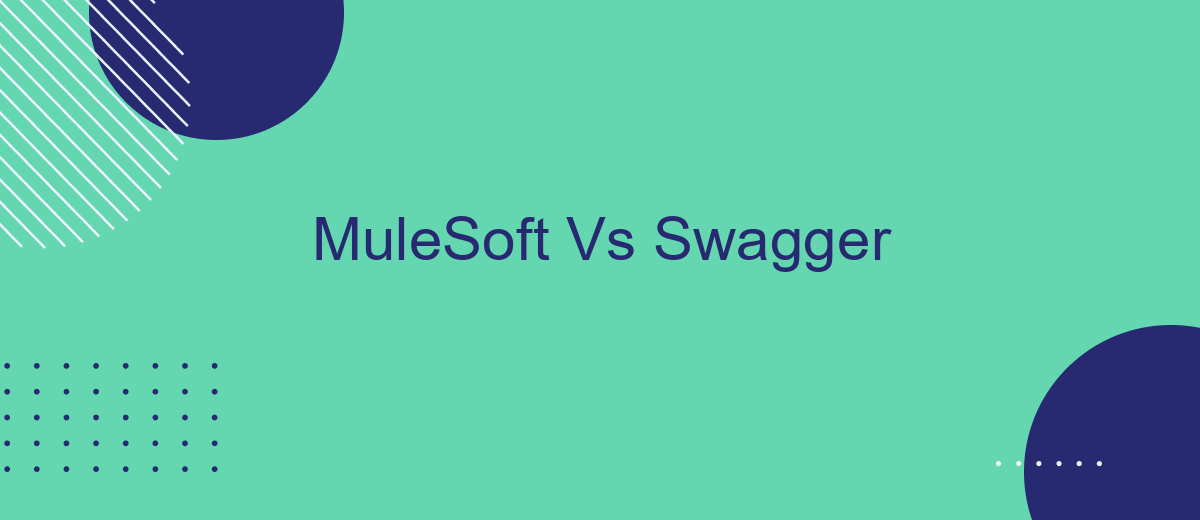When it comes to API development and management, choosing the right tools can significantly impact your project's success. MuleSoft and Swagger are two prominent names in this space, each offering unique features and benefits. This article delves into a comprehensive comparison of MuleSoft and Swagger, helping you understand their strengths and weaknesses to make an informed decision for your API needs.
Introduction
In the world of API development and integration, two prominent tools stand out: MuleSoft and Swagger. Both platforms offer unique features that cater to different aspects of API management and development. Understanding the differences between these two tools is crucial for developers and businesses looking to streamline their API processes.
- MuleSoft: Known for its comprehensive integration capabilities and robust enterprise solutions.
- Swagger: Popular for its simplicity and ease of use in API documentation and design.
- SaveMyLeads: A service that simplifies the integration process by automating lead data transfers between various platforms.
Choosing the right tool depends on your specific needs and the complexity of your integration requirements. MuleSoft is ideal for large-scale enterprises needing extensive integration solutions, while Swagger is perfect for developers focusing on API documentation and design. Additionally, services like SaveMyLeads can further enhance your integration efforts by automating routine tasks, allowing you to focus on more strategic aspects of your projects.
Benefits of MuleSoft vs Swagger

MuleSoft offers a comprehensive integration platform that enables businesses to connect applications, data, and devices seamlessly. One of the key benefits of MuleSoft is its ability to handle complex integrations with ease, thanks to its powerful Anypoint Platform. This platform provides a unified solution for API management, design, and implementation, making it easier for developers to create and manage APIs. Moreover, MuleSoft's extensive library of connectors and pre-built templates accelerates the integration process, reducing development time and costs. For businesses looking to streamline their workflows and improve operational efficiency, MuleSoft offers robust tools and features that cater to a wide range of integration needs.
Swagger, on the other hand, is primarily focused on API design and documentation. It provides a user-friendly interface for creating and managing APIs, making it an excellent choice for developers who need to ensure their APIs are well-documented and easy to understand. Swagger's open-source tools, such as Swagger Editor and Swagger UI, allow for interactive API documentation and testing, which enhances the development experience. While Swagger excels in API design and documentation, it may require additional tools and services, such as SaveMyLeads, to handle complex integrations and automate workflows. SaveMyLeads can help bridge this gap by providing pre-built integrations and automation solutions, enabling businesses to connect various services and streamline their operations more effectively.
Limitations of MuleSoft vs Swagger

When comparing MuleSoft and Swagger, it's essential to understand their limitations to make an informed decision. Each tool has its strengths and weaknesses, which can impact your integration and API management strategies.
- MuleSoft:
- High cost: MuleSoft can be expensive, especially for small to medium-sized businesses.
- Complexity: The platform has a steep learning curve, which may require specialized training.
- Performance: Some users report performance issues with large-scale integrations.
- Swagger:
- Limited integration capabilities: Swagger focuses primarily on API documentation and lacks comprehensive integration features.
- Manual setup: Users may need to manually configure and maintain their APIs, which can be time-consuming.
- Scalability: Swagger might not be suitable for very large or complex API ecosystems.
While MuleSoft offers robust integration solutions, it may not be the best fit for smaller projects due to its cost and complexity. On the other hand, Swagger excels in API documentation but falls short in integration capabilities. For businesses looking for a simpler and more cost-effective integration tool, services like SaveMyLeads can provide a user-friendly alternative to streamline their integration processes.
Choosing the Right Tool for Your Needs

Choosing between MuleSoft and Swagger depends on your specific needs and project requirements. MuleSoft is a powerful integration platform that allows for seamless connectivity between various systems, applications, and data sources. It is particularly suitable for enterprises looking for a robust solution to manage complex integrations.
On the other hand, Swagger is a set of open-source tools built around the OpenAPI Specification, enabling developers to design, build, document, and consume RESTful web services. Swagger is ideal for teams focused on API development and documentation, providing a user-friendly interface and extensive support for API lifecycle management.
- If you need an all-encompassing integration platform, MuleSoft is the better choice.
- For API design, documentation, and testing, Swagger is more suitable.
- Consider SaveMyLeads if you need a straightforward tool for automating lead data integrations.
Ultimately, the right tool for your needs will depend on whether you prioritize comprehensive integration capabilities or specialized API management features. Evaluate your project requirements carefully to make an informed decision.
Conclusion
In conclusion, both MuleSoft and Swagger offer robust solutions for API management and integration, each with its own unique strengths. MuleSoft excels in providing a comprehensive integration platform that supports a wide range of connectivity needs, making it an excellent choice for enterprises looking to streamline their operations through seamless integration. Swagger, on the other hand, shines in API design and documentation, offering tools that simplify the creation and maintenance of APIs, which can be particularly beneficial for developers focused on API-first development.
Choosing between MuleSoft and Swagger ultimately depends on your specific requirements and goals. If your primary focus is on creating well-documented APIs with ease, Swagger is an ideal option. However, if you need a more extensive integration solution that can handle complex workflows and multiple systems, MuleSoft is the better choice. Additionally, services like SaveMyLeads can further enhance your integration capabilities by automating lead data transfers, ensuring that your business processes remain efficient and up-to-date. By carefully evaluating your needs, you can select the platform that best aligns with your objectives and maximizes your operational efficiency.


FAQ
What is MuleSoft?
What is Swagger?
How do MuleSoft and Swagger differ in their primary functions?
Can MuleSoft use Swagger for API documentation?
What are some use cases for MuleSoft and Swagger?
Use the SaveMyLeads service to improve the speed and quality of your Facebook lead processing. You do not need to regularly check the advertising account and download the CSV file. Get leads quickly and in a convenient format. Using the SML online connector, you can set up automatic transfer of leads from Facebook to various services: CRM systems, instant messengers, task managers, email services, etc. Automate the data transfer process, save time and improve customer service.
